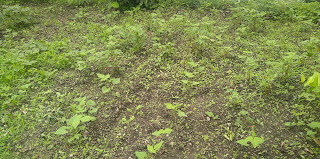Tissue culture- Plant tissue culture is a sub discipline of plant biotechnology. In plant tissue culture with the help of some biotechnological techniques the plants yield is increased or any desirable characteristics are developed in any plantss
Here a particular plant cell is cultured in an artificial conditions within a laboratory with the help of a particular nutrient media, with the help of this nutrient media the whole plant is developed with in a laboratory and the desired characteristics are developed in the plants. The artificial conditions should be free from any microorganism.
Two major properties of plant tissue culture technique
The plant tissue culture is basically based upon two techniques, these two techniques are base of this plant tissue culture-
1) Totipotency
2) Plasticity
Two major properties of plant tissue culture technique
The plant tissue culture is basically based upon two techniques, these two techniques are base of this plant tissue culture-
1) Totipotency
2) Plasticity
Totipotency- This is the ability of a plant cell to grow completely in a nutrient media or to grow during plant tissue culture technique. The whole process of this plant tissue culture technique is majorly based on this property of cell, which determines that weather the plant cell will grief into a new complete plant or not.
Plasticity- This is another important property of a plant cell which decides the basics of plant tissue culture technique. This is also known as the property of adaptation, as we discussed that the plant cell is culture in the artificial environment so it is a major property of plant cell which decides weather the plant cell is capable of adapting the new artificial environment or not, of but it will be difficult for the cell to develop into a new plant.
We discussed the two major properties of plant tissue culture technique, now we will discuss the advantages of plant tissue culture technique , from which you will came to know that why the scientists are involved in this technique , what is the profit and andante of this plant tissue culture technique-
Advantages of plant tissue culture technique
1- Disease free plants- The plant tissue culture techniques ensure the development of disease free plants. As we see that the plants developed outside in natural environment affected by a number of diseases, this the main advantage of plant tissue culture technique that the plants developed from this technique are absolutely disease free, hence plant tissue culture technique helps in development of disease free plants.
2- Biosynthesis of chemical compounds- Synthesis of primary and secondary metabolites is a great advantage of tissue culture, these primarily and secondary metabolites along work pretty compounds helps in the adaptability of plants in the artificial environment and developing the disease free plants.
3- Increase in yield of plants- Plant tissue culture techniques helps in the development of such plants which youth higher thang the normal plants which are grown in natural environment. Thus provides continues supply of raw materials obtained through the plants. This increasing yield is the demand of increasing population.
4-Overall improvement of plants- Plant tissue culture techniques is helpful in the development of overall crop characteristics such as highest yield, disease free, good adaptability, etc. This is believed as one of the best advantage of plant tissue culture techniques. So as to improve the overall agricultural system of the nation and to ensure there food security and sustainability for all.
5- Healthy diet- If we get a disease free crop for food purpose, if will be definitely a healthy Dieu for all the human population storm the world. This disease free nutrition comes from plants developed with the help of plant tissue culture techniques, and we all know how important is a healthy diet for all. Thus a great advantage of plant tissue culture technique.
These were the main advantage of plant tissue culture technique, which tells us the importance of this technique of tissue culture in today's agriculture, this is beneficial for agriculture all around the world to develop the plant from plant tissue culture techniques so as to develop disease free plants as much as possible.



